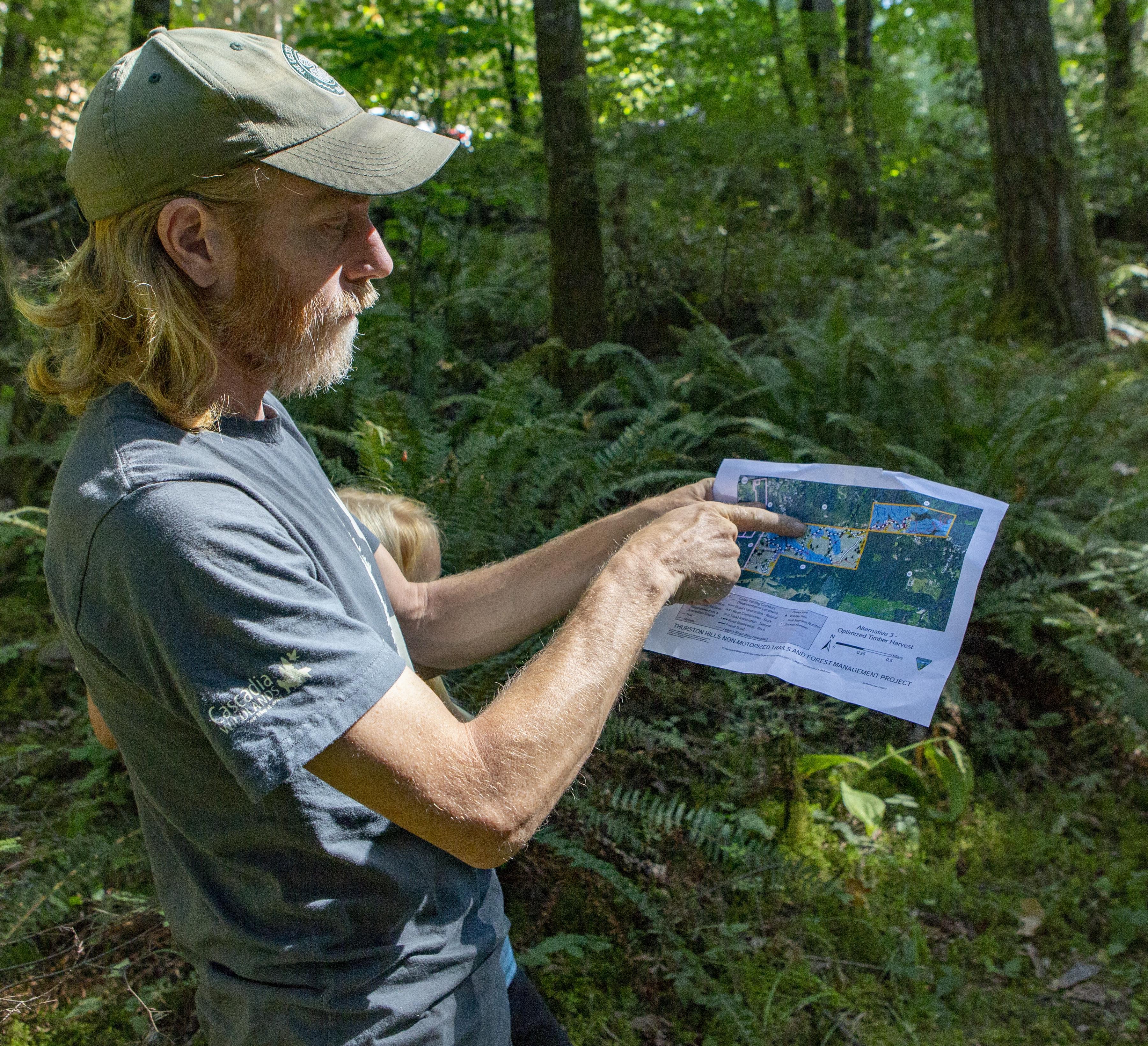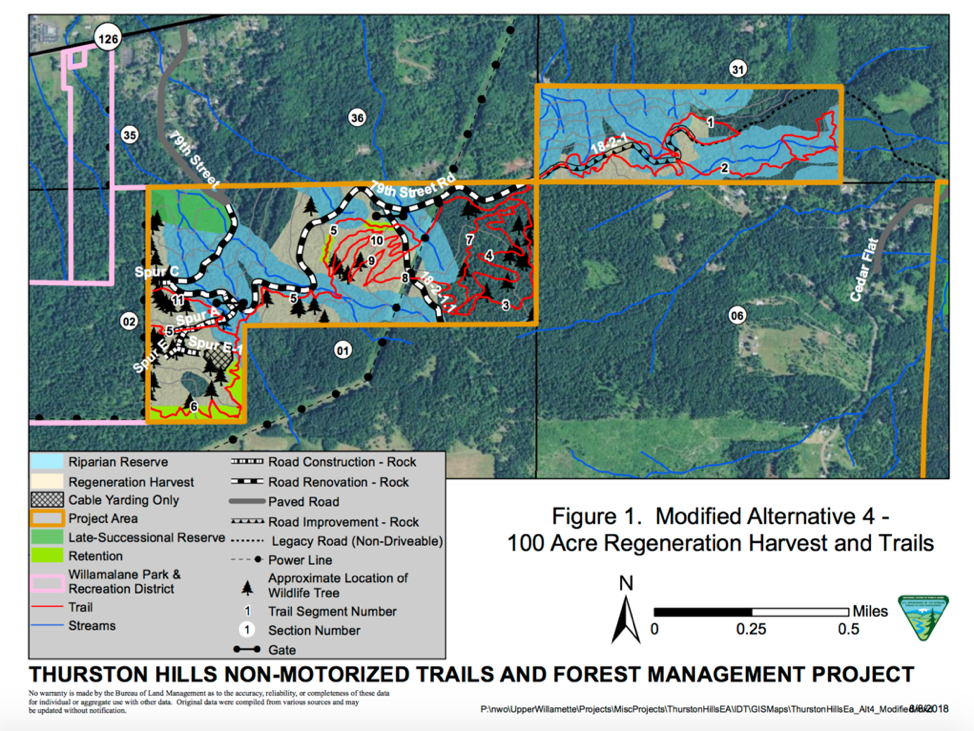FOR IMMEDIATE RELEASE
February 19, 2019
Contact:
Nick Cady, Cascadia Wildlands, 314-482-3746
Doug Heiken, Oregon Wild, 541-344-0675
Lawsuit Says BLM Clearcuts on the Edge of Springfield Will Increase Fire Hazard and Harm Recreation
Conservation groups and neighbors challenge the Pedal Power timber sale in the Thurston Hills
Eugene — Today, Cascadia Wildlands and Oregon Wild filed a lawsuit challenging the Bureau of Land Management’s (BLM) plans to clearcut 100 acres of public forest on the edge of Springfield and directly adjacent to Willamalane’s recently opened 665-acre Thurston Hills Natural Area. In their complaint, the conservation organizations and residents who live adjacent to the proposed clearcutting cite increased fire hazards and threats to recreation from the logging.
“I am concerned that the Bureau of Land Management chose to ignore the increased risk of wildfire that would result from their clearcut proposal, and am worried that the Thurston Hills timber sale will not only be a local eyesore, but will also threaten the safety of my home and community,” says Sue Hartman, a local resident who lives off of 69th Street in Springfield, close to the proposed logging.
The area to be logged was specifically designated as a recreation area in BLM’s 2016 Resource Management Plan (RMP). The recreation area designation is meant to complement the recreation and natural area goals on Willamalane’s Thurston Hills Natural Area which borders the BLM property. BLM has plans to build several miles of new non-motorized hiking and biking trails in the area after logging is complete. The new RMP calls on BLM to manage the area for high quality recreation experiences. The lawsuit says clearcutting violates this requirement, and the agency should have considered thinning instead of clearcutting to better harmonize timber and recreation goals.
“No one wants to go hiking or biking in a clearcut,” says Nick Cady of Cascadia Wildlands. “The BLM, true to form, is putting logging ahead of recreation, even in an area specifically designated for the public’s enjoyment.”
The lawsuit also points out that clearcutting will increase fire hazard posing a threat to dozens of nearby homes. Clearcutting removes fire-resistant trees with thick bark and high canopies. After logging, tree planting creates dense conifer plantations that have dense interlocking branches close to the ground. Fire experts recognize this as a very hazardous fuel condition. Nearby residents raised serious concerns about fire hazard during the public comment period, and BLM admits that logging will increase fire hazard for 40 years after logging. However, BLM refused to consider alternatives to clearcutting, such as thinning, that would likely reduce fire hazard.
“With the climate getting steadily warmer, it is simply irresponsible for BLM to put Springfield residents at increased risk of fire for the next 40 years,” said Kebrhea Cuellar, a local resident who lives in Springfield, close to the proposed logging. “It is baffling why the agency chose to conduct clearcutting instead of thinning in this recreation area so close to Springfield.
The timber sale has drawn ire not only from conservation and recreation interests, but also neighbors and elected officials like Rep. Peter DeFazio (D-OR), whose Congressional District includes this area. In June 2018, the Congressman wrote the BLM and told them, “If the BLM proceeds with this project, it will inflict lasting damage to its reputation and will garner ill will from the community for decades. The agency will lose any trust or goodwill that has been built over the years by previous district managers.” Shortly thereafter, the BLM made minor changes to the timber sale, but moved forward with the majority of the proposed logging.
More information on the project here.
Maps of the project area are below:


